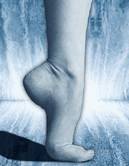
MONDAY, March 18 (HealthDay News) — Does a common test of blood pressure in the ankle help gauge heart disease risk for adults without any symptoms? A new government-appointed panel says there’s just not enough evidence to say yes or no on the issue at this time.
In a statement issued Monday, the U.S. Preventive Services Task Force (USPSTF), an independent panel that regularly advises the government on the effectiveness of various medical interventions, said it’s still unclear whether using the “ankle brachial index” to screen for peripheral artery disease (PAD) and assess the risk of heart disease is beneficial in adults with no PAD symptoms.
PAD causes decreased blood flow in the legs and can be a sign of overall cardiovascular disease, which increases the risk of heart attack and stroke. The ankle test, which compares blood pressure at the ankle with blood pressure in the arm, is used to diagnosed PAD.
The task force reviewed available research and concluded that there was not enough evidence to make a definitive recommendation about the use of the test in people who have no signs or symptoms of PAD and have not been diagnosed with heart disease, severe chronic kidney disease or diabetes.
Since there is no clear evidence, doctors should consider a number of things when discussing the issue with patients, including the current research; expert opinions; their own knowledge and experience; and patients’ health histories, values and preferences, the task force advised.
In the meantime, the panel “calls on the research community” to help settle issue, task force co-vice chairman Dr. Albert Siu said in a news release. “Investments in such research may lead to improved cardiovascular health for Americans and to a definitive recommendation from the task force in the future,” Siu said.
Public comment on the draft statement will be accepted until April 15 and will be considered as the task force develops its final recommendation.
More information
The U.S. National Heart, Lung, and Blood Institute has more about peripheral artery disease.

